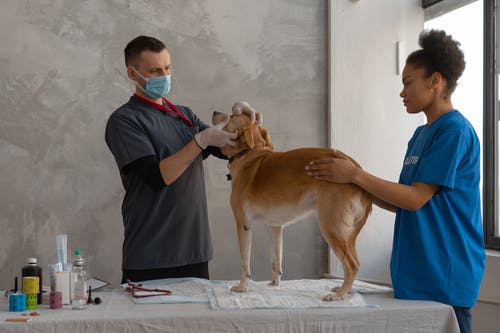Inadequate dental care can cause gum and tooth disease for cats, as it does for humans. Unlike humans, however, cats have acquired the skill of covering up their distress and pain. Amid a grueling agony, they maintain a stern manner of speaking, making it difficult to tell when something is incorrect.
While detecting whether your cat’s mouth is in pain can be challenging, sure signs could indicate something is wrong. Dental care is an integral part of feline health care since they are veterinarians.
Changes in eating patterns or refusal to eat are the most obvious signs of oral health issues. Cats might be attracted by their food bowl but refuse to eat since they’re uncomfortable. Alternatively, they may only go through a few bites before stopping.
Causes of Feline Oral Pain
Oral discomfort could significantly impact the quality of life of your cat. Dental and gum diseases can cause various difficulties like eating disorders and various other health problems. Dental pain can be a problem for cats for a variety of reasons.
Gingivitis
Gingivitis, also known as gum swelling, causes pain when the gums and teeth contact. It may cause redness, swelling, and bleeding in extreme situations. It can also make dry food harder for cats to eat.
A buildup of plaque typically causes gingivitis in cats. Plaque buildup is normal, but it will eventually harden into tartar, a yellowish or brownish film that develops over the teeth if it is not checked. The rough surface of tartar creates the perfect environment for harmful bacteria to invade the gums and cause gingivitis. This is a painful inflammation.
Fractured teeth
Fractures on the tip of the canine teeth (fangs) are common among cats. Because the pulp chamber of cats reaches so near to the end of the tooth, even the most minor fractures could expose sensitive pulp tissue. A tooth that has been broken could be painful and often results in pulp tissue inflammation and death. A vet like Noah’s ark veterinary hospital will assist you with any oral problems with your pet cat.
Periodontitis
The condition can become serious when gingivitis does not get treated or treated. Bacteria and inflammation damage tissues that join the teeth to the gums in cats with periodontitis, leading to tooth and bone loss in most cases.
It can also raise your chances of developing liver, heart, and renal diseases. There are rarely any obvious signs in the beginning phases of the gum condition, and by the time the first signs begin to appear, your pet could already suffer from severe disease. The symptoms are typically seen in older cats and have chronic periodontal problems.
Tooth Resorption
The tooth’s structure disintegrates, resulting in tooth Resorption. It starts inside the tooth and then spreads to other body regions. It affects between 30 and 70 percent of cats. It is the leading cause of tooth pain and loss. Resorption of the tooth is genetic and not a result of oral hygiene. For canine oral care, you should get a dog checkup.
Stomatitis
Stomatitis can be a painful and painful condition in which the immune system fights plaque on the teeth. The oral cavity tissues turn inflamed and red, and the tissues become thicker, making it difficult for afflicted cats to feed.
Stomatitis can be a problem with no treatment that is effective. Vitamins, antibiotics, probiotics, and various other medicines may temporarily alleviate inflammation, but none are helpful. Most of the time, the relief from pain offered by these medicines is temporary, and the agony is back at the exact moment.
Malocclusions
The jaws’ connection teeth are referred to as an occlusion. Malocclusion is when the relationship between the jaws isn’t as good as it could be and results in an unnatural bite. Malocclusion may cause pain and make it difficult for cats to eat. Visit a vet website like NoahsArkAnimalHosp.com for more details.

